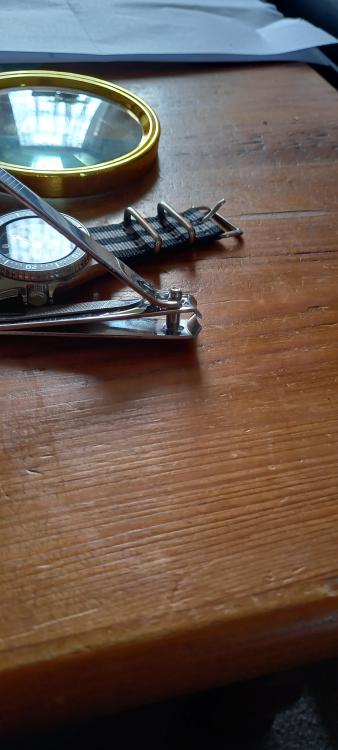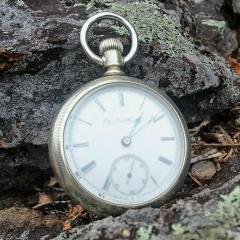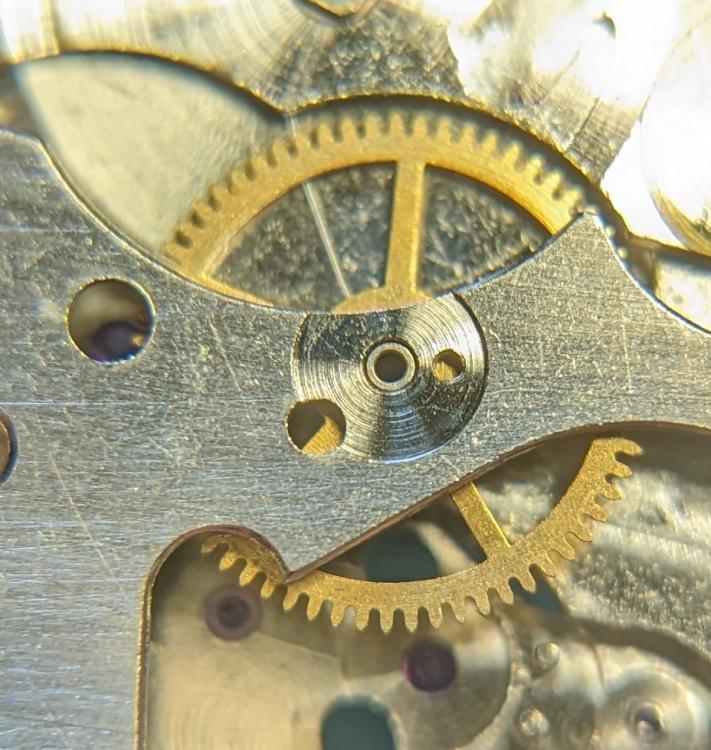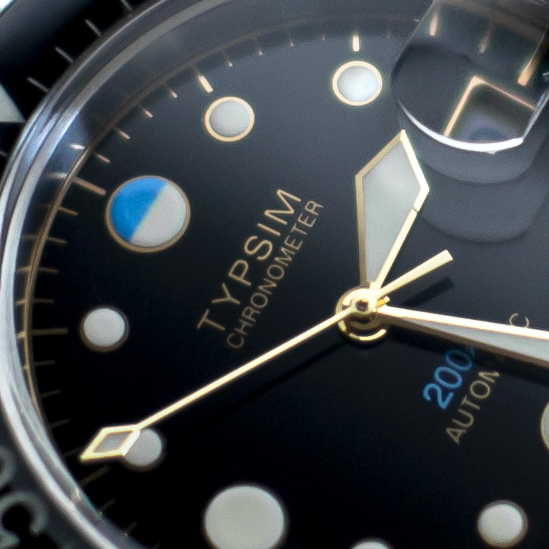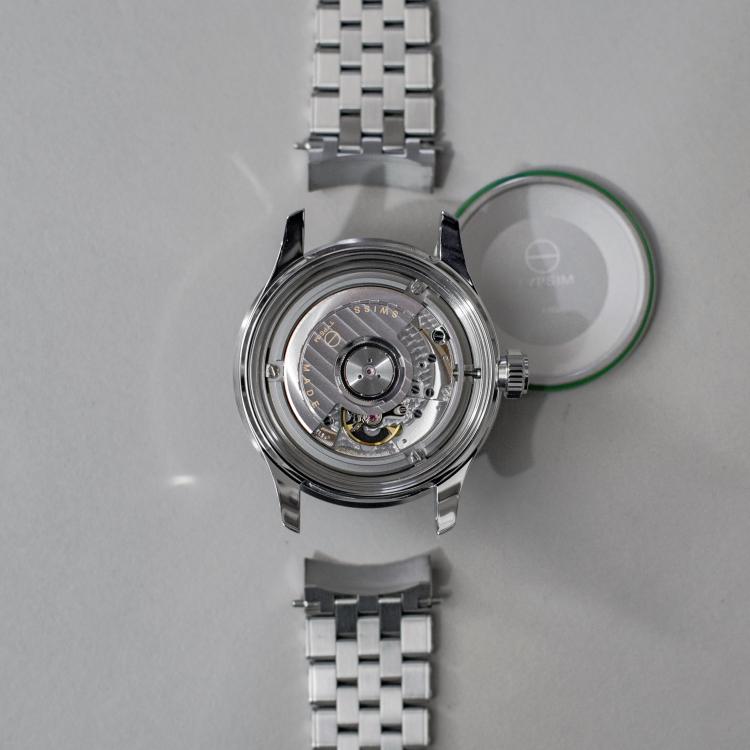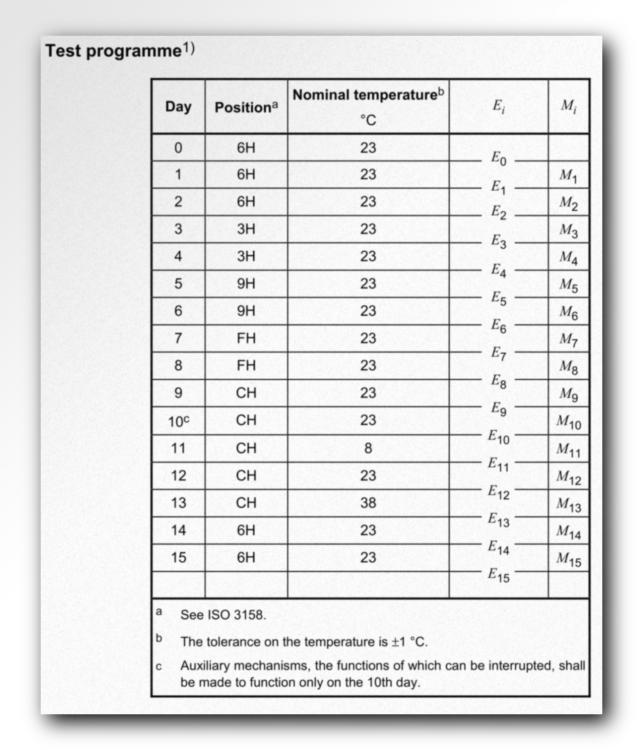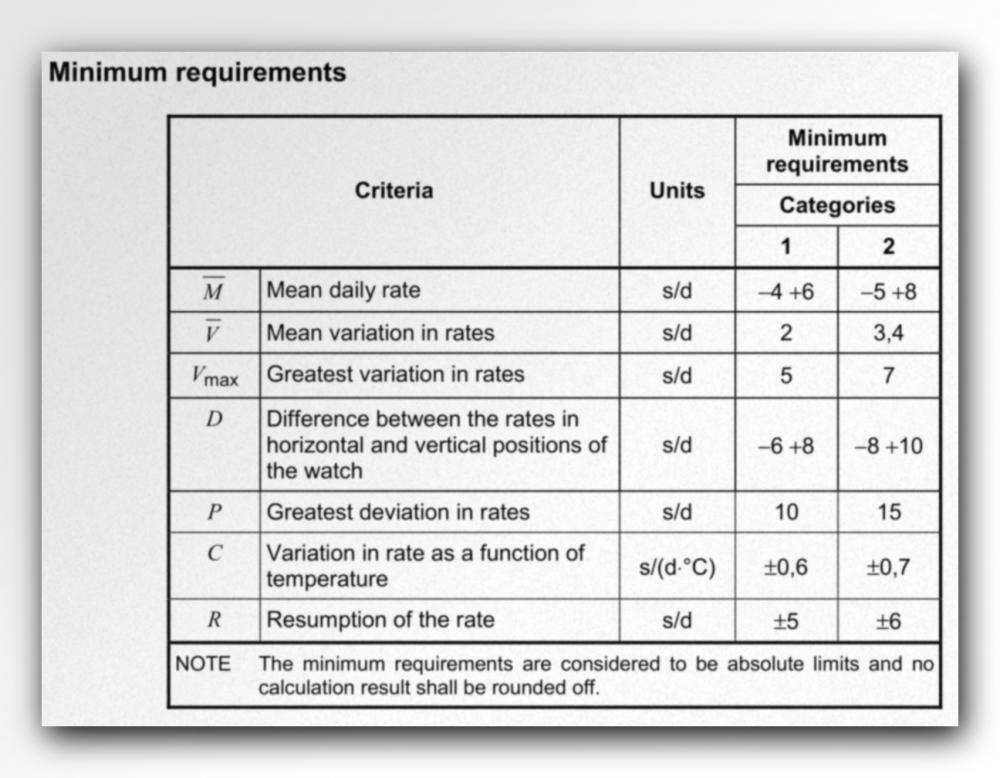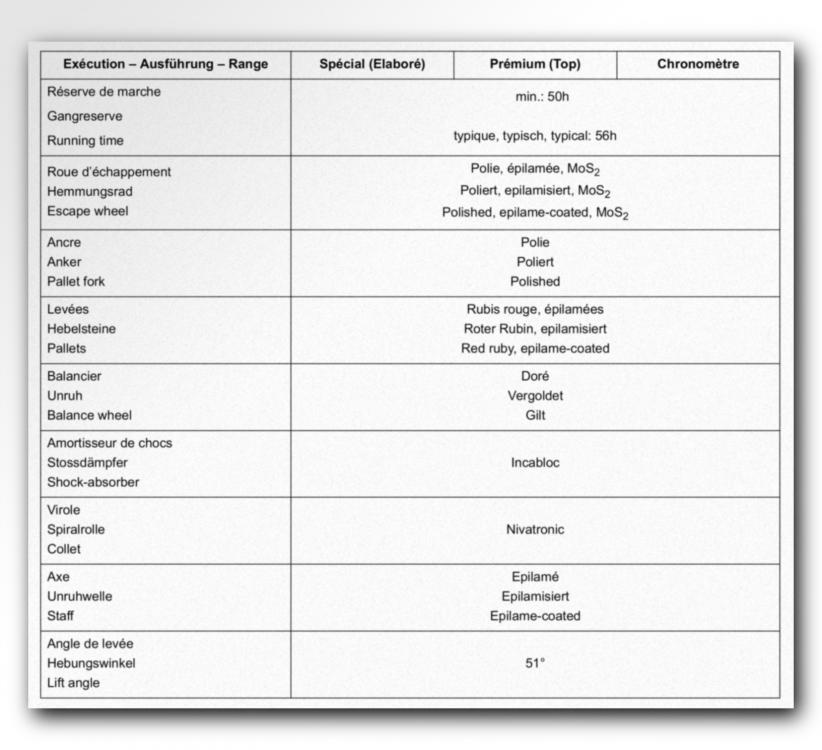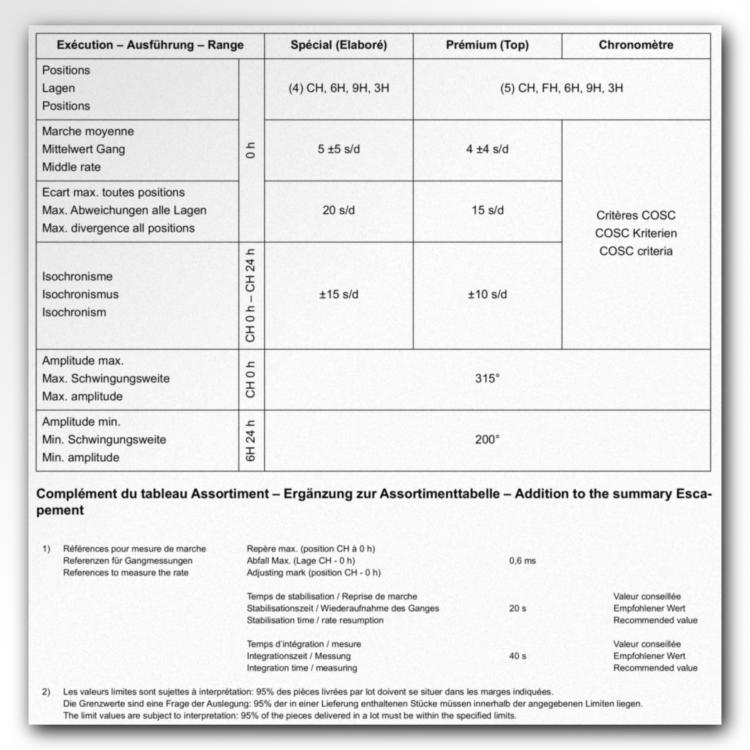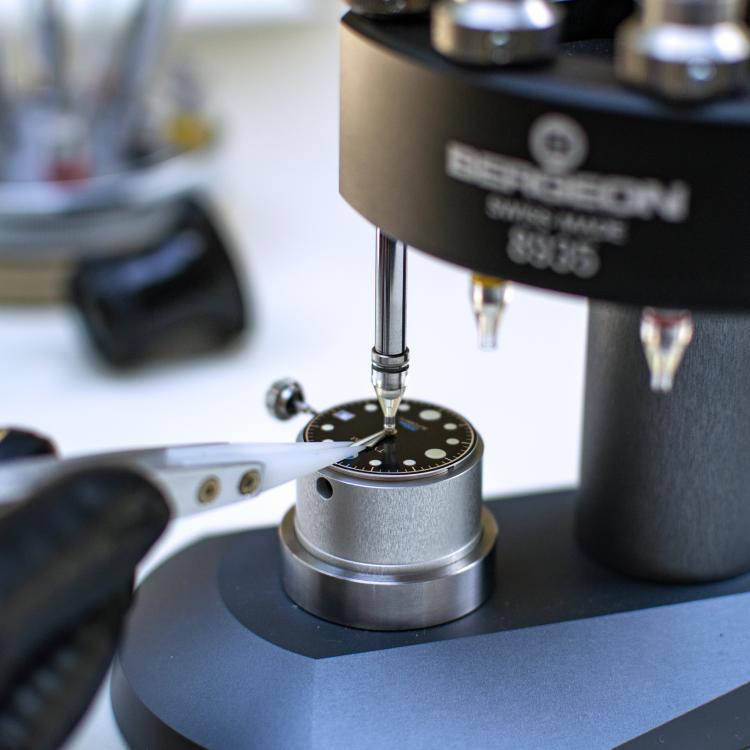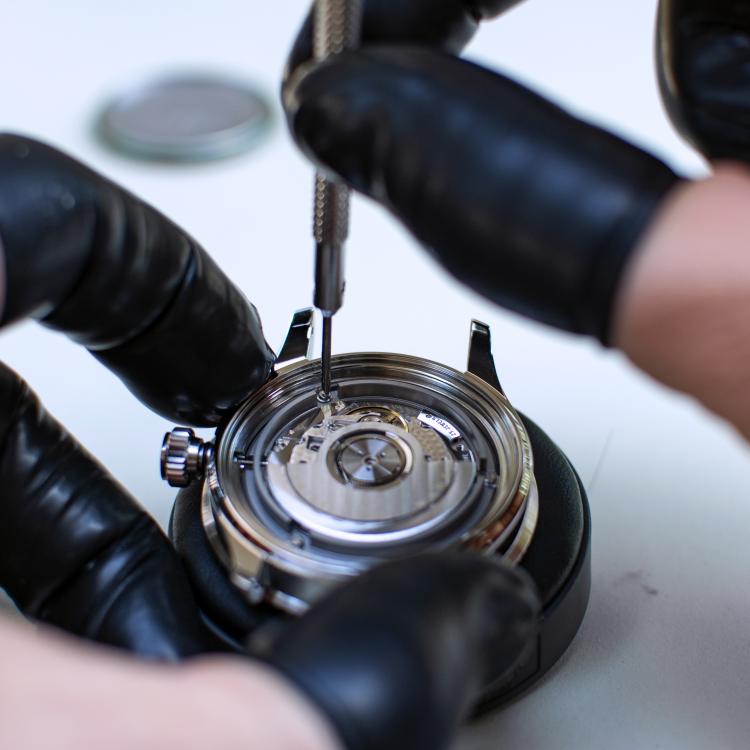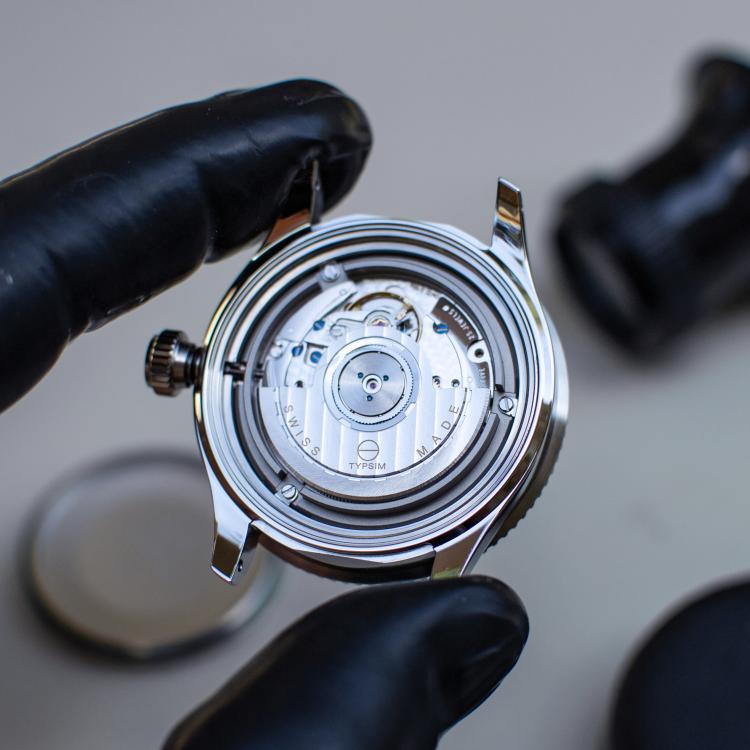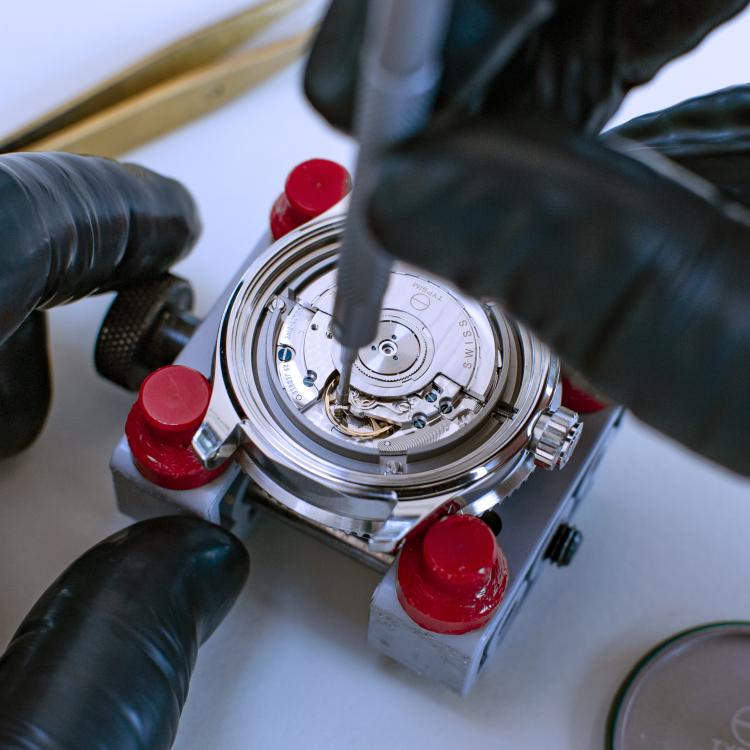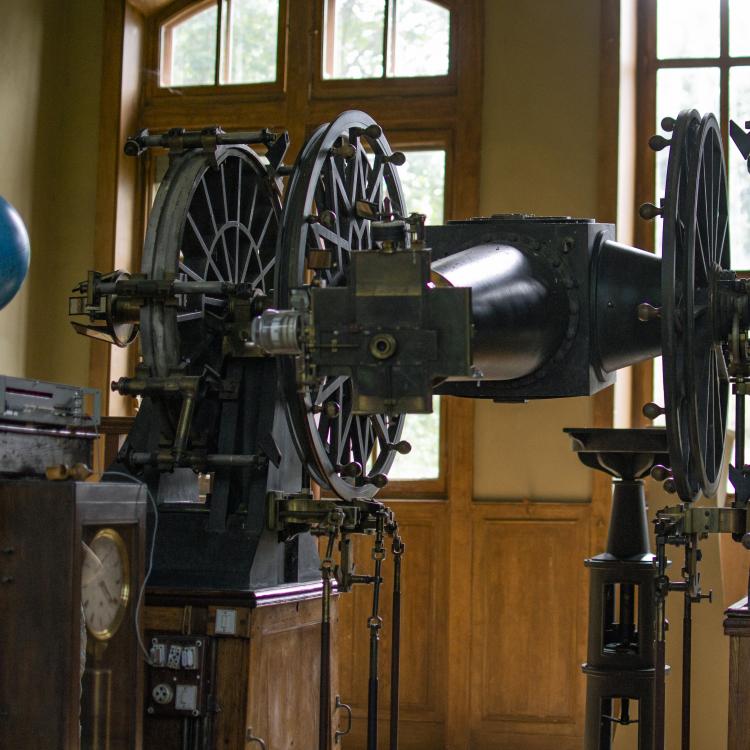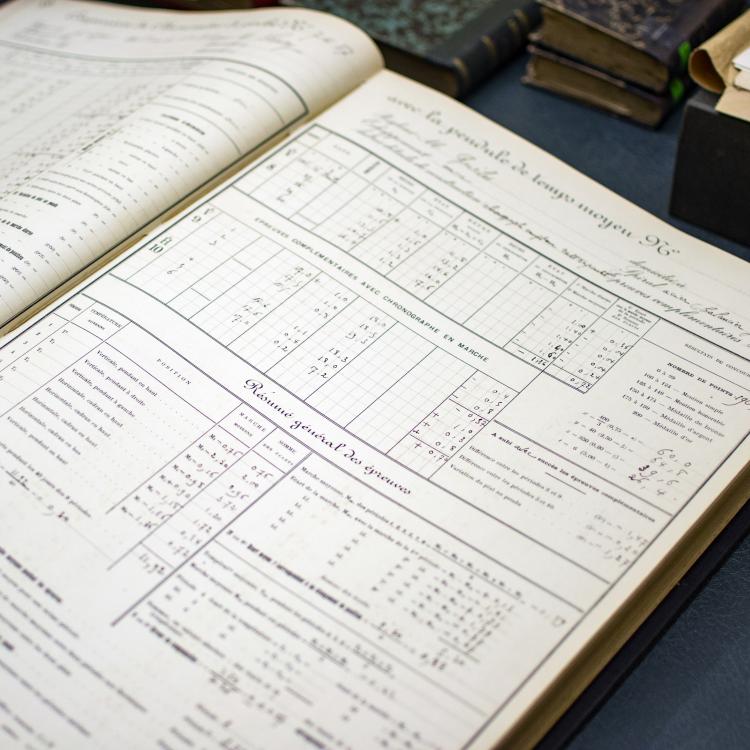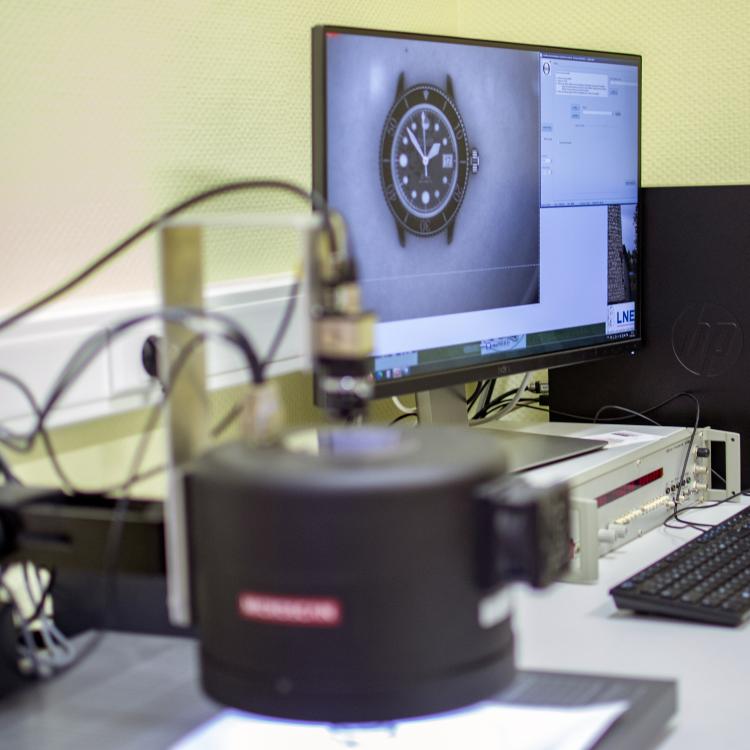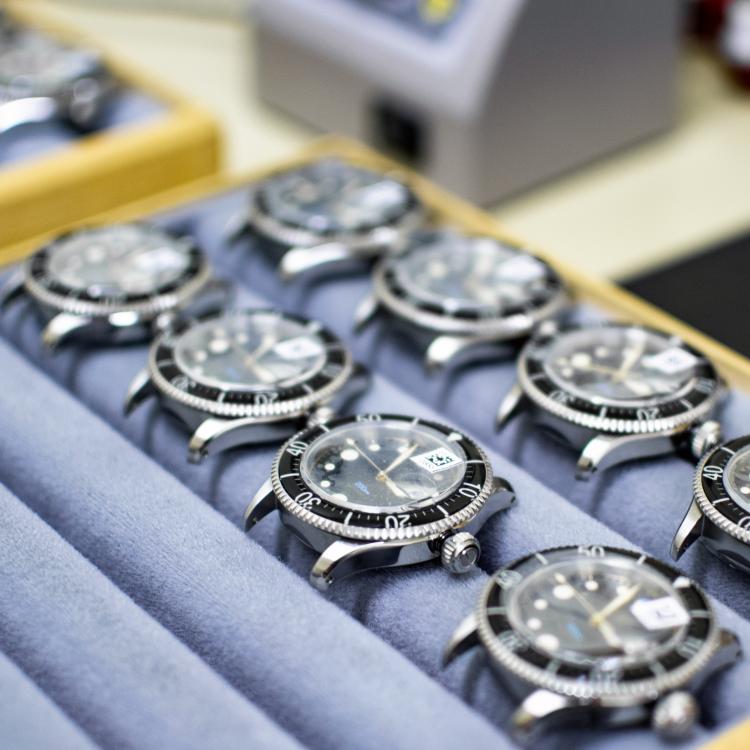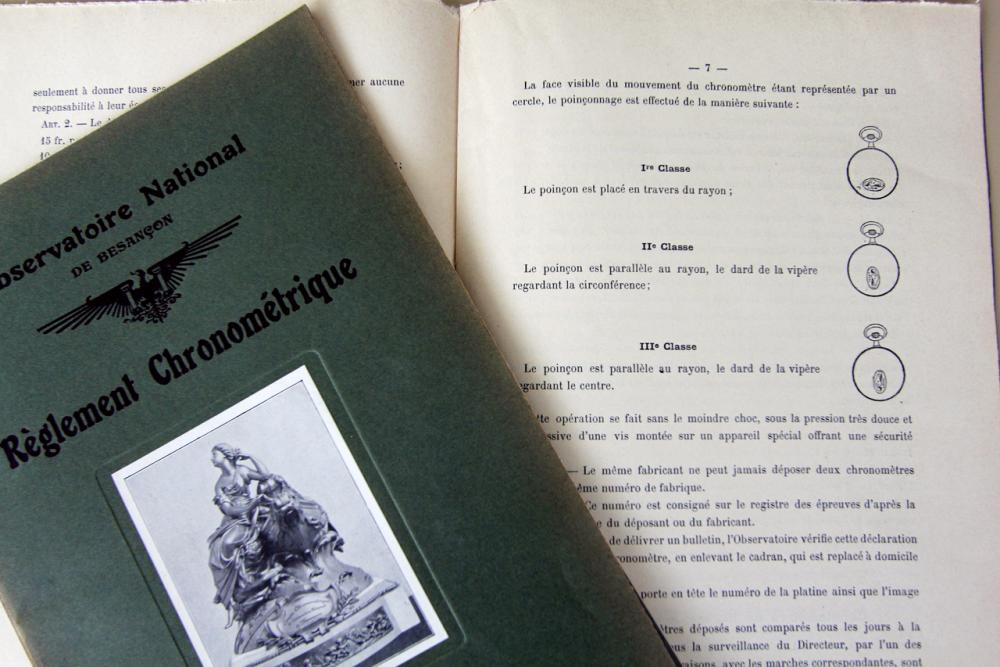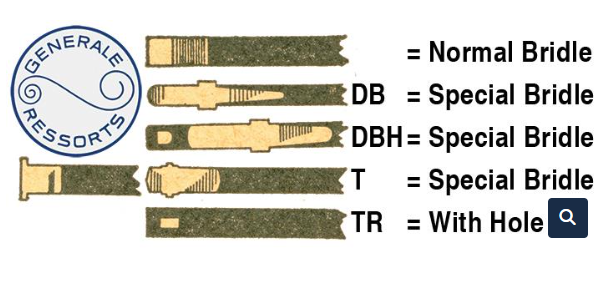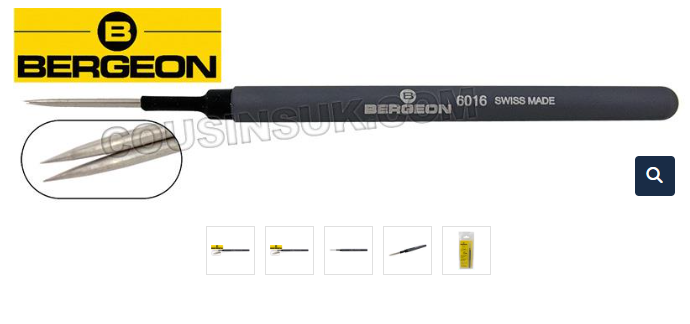Leaderboard
Popular Content
Showing content with the highest reputation on 09/11/22 in Posts
-
Progress at your own pace. There is no hurry. But keep moving forward. All of us have made mistakes along the way. Don't dwell on them. But learn from them and move on. Continue practicing on expendable movements before something you value. Whenever possible, look for a replacement movement, just to know how it would hurt if we screw up. Press on and enjoy.4 points
-
Hi A little heat applied via a soldering iron to the screw head may be of some help. may need more than one application . have you checked its not LHThread? .3 points
-
Keep practicing. In a few years you will wonder why you had bother with small screws ! Try laying a finger across where you are trying to install the screw, then press the side of the screwdriver blade against the side of your finger. It will give you more control. I work under a microscope, which makes it much easier when dealing with small parts.3 points
-
with out seeing it, the only black disc mystery dial is the Futura that was released in 1957. movements of that era do not have serial numbers, so can't be found in the look up databases using the serial number. some of the databases have grade lists that can be reference. 23j is correct for the mystery dial line of movements. I'm no expert, I prefer GURU, General Understanding Relatively Useless. I've just asked more questions and found more answers than most, theres still a lot of unknown questions and answers when it comes to Elgin but theres more people digging these days.3 points
-
Eyup everyone, how you doin ? Assuming I've chosen the correct section, not quite tool making, or adaptation as we often do. This is more of a tool re- application. This week i bought from ebay a cannon pinion tightener although some disagreement as to this. I'm yet to discover it in a vintage tool catalog that John kindly posted up. But i did find another tool that i was trying to identify a little while ago which we can have a look at later, hopefuly that one has a good design as it will be very useful for a particularly difficult proceedure. So this is a great little hack tool that WW suggested which i think came from Nucejoe apologies if i have that wrong, i have always thought credit were credit is due especially when it comes to ingenuity. Presenting the cannon pinion tightener upper clippers. I will have a little play this afternoon with some spare cannon pinions and then add my findings afterwards.2 points
-
There is a fairly new YT channel currently called "Its about time" (previously called It's about f*****g time). The poster of the videos is named Alex Hamilton, and is a watchmaker in North Carolina. He has quite a few videos directed mostly to the new watchmaker and hobbyist. Some of them are very insightful. His current video goes into great detail on how to source parts. Parts for every era of movement. I wanted to share this with the community in case folks like me have a hard time looking for parts. Several of the web pages he highlights were known to me, but there were several that I was unaware of. I am still in the early stages of learning this awesome trade/hobby. I have been known from time to time to lose parts.... lots of parts. I then spend days looking for those parts and it does get tedious... I know... Stop losing those parts. Im working on it LOL! Here is the link to the video and I hope others find it as useful as I did. Good Luck "IT'S ABOUT TIME"2 points
-
One thing I learned early on is to pretty much just ignore what it says on the dial unless it's a name brand with a lot of circulation. There were many many thousands of companies, jewelry stores, individuals, etc. that "made" watches. The movements are all we really concern ourselves with, because you're pretty much guaranteed to not find spare case parts, special hands, or anything like that. There were only hundreds to the very low thousands of movement manufacturers out there, and they tended to be around longer, do more, and be more organized. If the case is screwed, you'd better be good with metal work. Even a lot of the plating isn't doable any more on small scales due to environmental regulations. Beyond the case/dial/hands, parts can either be pretty easy to get, or insanely difficult. Doesn't seem to be a lot of middle ground. First thing to do is pop that movement out, and figure out what it is. You can spend hours and days digging around on the internet, or you can loosen a few screws and know in a few minutes. If this watch has any meaning or value to you, and it's your first victim (carefully chosen word), hop on over to the 404 Club thread, and get some inspiration. There are a lot of really cheap donors out there you can screw all to hell without a care before you mess up something important or valuable. As for the specific movement, that... route? channel? is bizarre! I didn't even realize it was a 3/4 plate until Shane pointed it out. No one will see that unless they're poking around inside the case, a watchmaker isn't going to be especially impressed by the movement, and it doesn't seem likely to be much in the way of exhibition cases in that era... Weird! Finally, all of this may be moot. It's clear just looking there that the click spring is rotated to where it's no longer engaging the ratchet wheel. I imagine there's a missing screw that is supposed to hold it in place, and that's AWOL. You probably haven't built up a screw stash harvested from your failed victims yet, but that's what you need. You can find out if the rest of the watch is worth the trouble by holding it in place, giving it a turn or two of wind, and see if it goes.2 points
-
Yes- AS were particularly inclined to use left hand thead on both crown and ratchet wheel screws.2 points
-
I know what you mean. I've said several times, pull apart cheep quartz watches. You don't have to be careful and if you lose something you won't sweat it. It frees you up to get comfortable.2 points
-
By the way, the next time I encounter one of these, I am NOT going to remove it and save myself the frustration. When I took this thing apart initially, I assumed at first glance it was doing something like a cap jewel and had to be lubricated from the underside. It's not at all worth the effort of battling with that eensy little screw (at least not until I develop much better tweezer & screwdriver control and get better at working through a loupe) I just learned about an extreme example of this recently, as explained by Stian. Oris got legally boxed into using pin pallet escapements by a 1934 law prohibiting them from adopting technology they were not already using https://youtu.be/gmMOq_CUFiM?t=2662 points
-
I understand now. The second wheel is beared inside the hole in the bridge directly, then the center wheel shaft passes through it but the second removable bushing is there as the upper bearing surface for the center wheel and it probably reduces the hole to match the interior size of the second wheel. So it likely couldn't be machined into the bridge. Here's the space before it is installed. I was thinking this is a needlessly negative take, but then I spent an hour reinstalling that piece and it's screw the size of a grain of sand, dropping it repeatedly, fishing it out of the carpet with a magnet. I even managed to shoot it across the bench from within a plastic bag I was using to contain it, and separately to sling shot it with a tiny hair of rodico.2 points
-
Introduction Before I jump in to sharing my story I will introduce myself. I’m Matt. I’m the founder, designer, and watchmaker of Typsim Watches. Typsim is a small, independent watch company based out of Seattle, WA, USA. This is my experience with chronometer certification of the Typsim 200M-C. I chose to have some of the Typsim watches chronometer certified out of my desire to produce the high-quality, accurate watches. For me, chronometers represent watches that use the highest quality materials, are put together with great care, and are rigorously adjusted and tested. But further, they connect a timepiece to the history and pursuit of precision timekeeping Typsim is a USA-based company, registered in the United States. The watch components come from Hong Kong, China, Canada, USA, and Switzerland. The watches are designed, assembled, and regulated in the United States. Because of this, Typsim watches or movements cannot be tested by COSC, Contrôle Officiel Suisse des Chronométres. The Typsim 200M-C is designed with a Sellita SW300-1 movement. This is Sellita’s comparative movement to an ETA 2892-A2 or Omega 1120: Diameter: 11.5”’ (25.6mm) Height: 3.6mm Frequency: 28,800vph (4hz) Jewels: 25 Power Reserve: 56hrs Features: Center Second Hand, Quickset Date Sellita offers their movements in several grades, Special (Elabore), Premium (Top), and Chronometre. The primary difference between Premium and Chronometre is the precision in which the movement is regulated for the average rate, max positional rate difference, and isochronism tolerance. The Typsim movements were ordered as rhodium-plated, diamond-snailing decoration, blued screws, custom logo engraved oscillating weight, custom date disc, with Premium regulation and Chronometre grade components (balance, pallet fork, escape wheel). What’s required of chronometer certification? The chronometer test program is defined by ISO (the International Organization for Standardization). ISO also accredits the testing laboratories that perform the tests. For reference, COSC follows ISO standards and is accredited as a testing agency by Swiss Accreditation Service. There are several other testing agencies around the world that can test and certify chronometers which include Besançon Observatory in France, Glashütte Observatory in Germany, and very recently the Horological Society of New York in the United States. A certification is provided to a wristwatch that successfully meets the requirements of the testing program defined by ISO 3159:2009. Test testing protocol lasts 15 days, tests 5-positions and 3-temperatures. The minimum requirements are: I selected to have the Typsim watches tested and certified by Observatoire de Besançon in Besançon, France Besançon, the historical watchmaking capital of France, is located in the eastern part of the country near to the Swiss border. It’s history as a watchmaking place began shortly after the French Revolution and culminated in the mid-twentieth century. Unfortunately, the 1970’s rise of quartz-based watches create a sharp downturn in mechanical watchmaking and shuttered much of this city’s watchmaking companies. The city’s expertise in precision work pivoted toward micro technologies. Since the 90’s the watchmaking industry has slowly recovered with a focus on high-end and custom watches. In 2002 the Observatoire de Besançon reopened for chronometer testing. Since then, they test several hundred watches a year, mostly from independent companies like Laurant Ferrier and Voutilainen. The typical success rate hovers around 70% with even the best companies averaging 80% success rate. Testing at the Observatoire de Besançon differs from COSC in that the Observatoire de Besançon only accepts fully assembled, complete watches with all components engaged for testing. COSC on the other hand tests bare movements with the automatic device (if a part of the movement) disengaged. This means testing with the Observatoire de Besançon accounts for more complexities faced by assembling and having an assembled watch. Preparations Understanding the testing requirements and average failure rates, I felt immense pressure to submit the very best performing watches I could. The first step was identifying the best movements out of the batch of movements provided by Sellita. Sellita provided movements conforming to their Premium regulation standards: Adjusted in 5-positions Average rate of +/- 4 s/d Maximum difference between positions of 15 s/d Isochronism of +/- 10 s/d Per terms with Sellita, up to 5% of the movements are allowed to be delivered outside of Premium regulation specifications. I created a preliminary, bare movement testing protocol to identify the best movements out of the box. I tested each movement in 6-positions with 20-seconds of stabilization and 40-seconds of measurement per position at both full wind and -24hrs wind. I was able to discover the number of winds to achieve the full wind and -24hr wind thru crown rotations, not waiting 24hrs. I measured the number of winds it took to wind up a watch to full wind after 24hrs. That number was subtracted from the number of winds it took to fully wind a movement to determine how many winds to wind to -24hrs. The instantaneous values from the timegrapher were inputted into a spreadsheet which calculated: Average Rate Weight Average Rate Minimum Rate Maximum Rate Delta DVH Di Isochronism Hypothetical Chronometer Testing Results based on the average between 0hr and 24hr rates From this information, the best performing movements were selected for assembly. Movements were selected for the amplitude, min/max rate delta, isochronism, and their apparent aptitude for passing the hypothetical chronometer test. These values gave me an idea of how well the movement was fabricated, lubricated, assembled, and regulated from the factory. Serial numbers were engraved on to these movements. One anomaly that bothered me at first, but I eventually let go, was the rate in the 12H (crown right) position. This is a position not tested under ISO 3159:2009 nor as a part of the Sellita specifications. Frequently, this position presented beat rates 5 – 7 s/d slower than the minimum beat rate in the other 5-positions. The selected movements were selected in part because they did not demonstrate this beat rate delta. With movements selected, the Typsim 200M-C watches were fully assembled and retested all over again using my pretest protocol. This was done to verify the assembly process was executed without causing issue. The watches were all adjusted based on the pretesting protocol. The beat error was reduced to 0.0 or 0.1 in CH (dial up) position. The rate was adjusted based on the average beat rate between 0hr and 24hr instantaneous rates. The Etachron pins were adjusted to narrow the isochronism down as close to 0 as possible. I would soon find out this was not the best route to make adjustments for this test. With the watches adjusted I set about testing them in accordance with the ISO 3159:2009 testing protocol. I planned to take measurements every 24hrs and adjust as required. The watches were set against www.time.gov and measured against the same online atomic clock after 24hrs to determine their actual, daily positional rate. I quickly discovered the movements were not demonstrating a rate that averaged between 0hrs and 24hrs rates but instead represented the instantaneous rate taken at full wind. Said differently, in real world timing condition, the rate was what a timegrapher said it would be at full wind. If the full wind timegrapher results for CH (dial up) indicated +1 s/d, the 24hrs wind timegrapher result indicated -4 s/d, the watch would demonstrate +1 s/d when measured against the online atomic clock after 24hrs. This was true of all positions. From the point of this discovery onwards, my adjustments were made only considering full wind timegrapher results and actual timing results. Each movement was tested for actual timing results for two weeks in CH (dial up) and 6H (crown left) positions. These two positions were prioritized for two reasons. First, ISO 3159:2009 emphasizes the rates and differences between these positions in the minimum requirement calculations and number of days tested in these positions compared with the other positions. This meant these positions needed to be as close as possible in their rate. Second, when CH and 6H rates are adjusted to be equal the other 3-positions were reined in to be within +/- 2 s/d, having a 5-position rate delta of around 4 s/d. Confirmation of 5-postiion average rate and rate delta was performed every 4-5 days during this process using the pretest protocol. Achieving a 4 s/d tolerance provided for a daily average rate that was well within ISO 3159:2009 requirements. My methodology for equalizing the rates between CH (dial up) and 6H (crown left) was to measure the instantaneous rate at full wind for each position. Depending on the results, the Etachron regulator pins were rotated further opened or closed. If vertical position had a faster rate than the horizontal position, the pins were opened. If the vertical position had a slower rate the pins were closed. I adjusted the pins with the movement running at full wind, testing for the results after each adjustment. I found, minor rotation of the pins would increase or decrease the beat rate in CH (dial up) position. The smallest rotation I could make would affect the CH (dial up) beat rate by +/- 10 s/d. I discovered that amount of rotation would bring the rates between CH and 6H together by about 1 s/d. If my CH (dial up) rate was +1 s/d and my 6H (crown left) rate was +4 s/d I would need to open the regulator pins just enough to reduce the vertical rate by 3 s/d. I would rotate the regulator pins until the CH (dial up) rate was approximately +31 s/d. I would then adjust the regulator arm to +1 s/d and measure the resulting rate for 6H (crown left). The resulting rate would typically measure +1 s/d. I would not call this scientific, but the results were consistent enough that I could rely on the action and corresponding results. I have a suspicion the instances that didn’t work out this way were due to my inadvertently moving the regulator arm, hence changing the rate more than the pin rotation alone. At the end of the 14 days the watches were performing at +0 s/d to +1 s/d in both positions – both as shown on the instantaneous timegrapher results and with 24hr timing. The Test Historically, the Observatoire de Besaçon used a Lunette Meridienne instrument to measure elapsed time through precise observation of solar bodies passing through the meridian. This one axis instrument sits on a dedicated, three-story, solid foundation – as do the reference piers outside the building – to maintain instrument stability. Comparing the elapsed time on the watch with the movement of solar bodies allowed the observatory to calculate the rate to the tenth of a second. Today, Observatoire de Besaçon uses three interrelated atomic clocks located in a thermally and seismically isolated room to synchronize the various clocks throughout the laboratory. These clocks are a part of the French national and international atomic clock organizations, setting the most precise time around the world. The watches are provided a QR code, and the hands are digitally synchronized to their timing software with a high resolution, macro camera. Each watch is held in position by holders and placed in a temperature and humidity-controlled vault each day after measurements and winding. I decided to fly the watches from Seattle to Besançon myself, hand delivering them to the Observatoire de Besançon. Due to the sheer value of the watches being shipped from the United States to France and back again, the shipment needed to be processed through customs with a Carnet. This is a special, temporary export/import procedure allowing for products to be shipped between countries without duty. The caveat to this procedure is the shipment needs to be hand carried or couriered (basically not shipped with FedEx, DHL, etc). I also had concerns that the vibrations of a cargo plane or handling of a courier could displace the precision adjustments in the watches. Finally, I personally wanted to see the historical observatory, meet the staff, and understand every part of the process. The watches safely made it to France with me in mid-August 2022 and I was notified of their success rate in early September. The 95% of the watches successfully passed the test and were certified chronometers. 70% of the movements had an average daily rate of -0.5 s/d to +2.0 s/d, aligning with what the preparations and pretesting indicated. The remaining successful results were just barely outside that range at -2.0 s/d or +3.0 s/d. The failing results were not far off at around +6.5 s/d, just outside of minimum requirements. Each movement will now receive a Tete de Vipere, symbol of the viper, the historic marking used by the Observatoire de Besançon that the movements were certified chronometers in Besançon.1 point
-
I like Stian, too! I especially like (typically) his little history lessons on each of the watches he works on. I always learn something new when i watch one of his videos.1 point
-
I have seen that video. Good stuff for us newer hobbyists on not to make too many mistakes, when buying used watches. I forget who mentioned him, but I heard about Alex from this forum. I started watching his videos and I like his easy manner and his common sense tips. I am am a big fan of Joe's (nekkid), as well. I really enjoy his videos. Good Luck to everyone1 point
-
Same issue here a couple of days ago George. As ww and nickelsilver says, test for the common scenario of a reverse threaded screw. Feel for some movement each way. After a few experiences with them it will become second nature to test and feel for tightening and loosening of a rachet screw regardless of its threaded portion direction of up or down the screw.1 point
-
1 point
-
1 point
-
It was really a one off case as i was only sorting the stem. I normally use a very small slow cooker to dry parts that heats to around 50 degree celcius without the lid on.1 point
-
Sounds like the same kind of problem that I've experienced. Condensation was the only thing that I could think of that would cause that kind of problem. Since I always use a bit 'o heat now, the problem hasn't recurred. Not proof, but having a bit of heat handy is easy enough.1 point
-
That usually helps but in this case was what led to the rodico slingshot incident . The plate was so tiny that I couldn't keep my finger still enough on it to work the screw without shifting the plate out of place. So I stuck a dab of rodico over it then put my finger on that, and who the hell knows what then led to it stretching onto the screwdriver, grabbing the screw and flinging it off the desk.1 point
-
That is exactly how i got my tweezer manipulation under control. I bought from ebay literally a bucket full of quartz movements and spent almost a months worth of evenings stripping them down testing them , badging and bagging them up for parts. The screws can be much smaller than mechanical. It was the best 40 quid i have spent since i started repairing. I also learned a lot about quartz watches and now have a shed load of parts, a lot of the movements are complete and working. Amazing how well they survived as many were uncased. I still have approx 400 movements to go at when i get chance.1 point
-
Haha. Without them everyone can see exactly what you have got.1 point
-
I know cars were just your example and as you say you could have used zip fasteners instead. I would have been confused but would have tried to speak in relation to them. I've got nothing.1 point
-
I know. It's just that I have been on the other side of this type of issues. Saying why don't we just do it like this, it makes total sense and would also be cheaper in the long run only to be told that "we can't because, **** already has a patent on doing it that way". It's frustrating to be forced to design something that you know could have been better. I'm sure watches have had their share.1 point
-
Eyup Shane. It was just an example i was using to illustrate my point of view that I'm sure applies to the design of everything, from skyscrapers to zip fasteners. If memory serves me The Oris Watch Company was caught up in one such situation. Which restricted them to using pin pallets for quite a long period of time. As far as i know this restriction pushed them towards innovations with pin pallet watches reaching almost if not chronometer standards at that time. Lol. You too matey. You go have a lay down and rest your finger you've earnt it1 point
-
Just as there have been cars that have been badly designed in the past. Watches have their own idiosyncratic design flaws. A design coming to its end that is running out of funds or taking too long, not reaching its deadline may have that # Lets just get it finished approach #. When i used to repair cars as a teenager i saw this all the time in the 80s and read endless magazines that told of specific design flaws of the latest models. We all know of the # dont touch that model as this goes wrong with it all the time #. Without inside manufacturers knowledge we can only guess why a movement was designed a set way, like working through a snagging list at the end, a hack to get over some other issue could create a poor design. By the sound of it mb you could make an Olympic event out the antics you are having with that enormous screw1 point
-
Hello @grsnovi I took a week to have a good look at it. Visually gorgeous and obviously oriented at the discerning "art" collector of timepieces and also quite focused on the fame of various patrons as well as claims of innovation. A great read if you are visually driven and curious about what such a storied personage was responsible for in terms of contribution to the art...not to mention an exceptionally inspiring story if you are Entrepreneurially-minded. Breguet experienced many setbacks in his time - some of them close to terminal - but still he soldiered on, to our everlasting benefit. g. ----1 point
-
Merging the two - kindly let me know if you spot this in the future by using the "report" feature1 point
-
Most plates and bridges are made of brass and wear very easily, so sometimes a harder, more wear resistant material like steel is used for the hole. Sometimes, even the "endstone" is just a steel disk.1 point
-
Hello @brunomartins and @HectorLooi Personally speaking, I try to buy at least one practice movement for every working timepiece I plan to service (some day, when I have all of the required tools...sigh). That way, if a part pings into oblivion I have either done it on a non-working movement, or I (hopefully!) have a spare that I can take from the "practice" movement. Yes, this balloons your inventory immensely, but I think it pays off in the long run as purchasing service parts is proving increasingly difficult and expensive. g. -----1 point
-
Hello @rossjackson01, You've just hit a wall that all budding Watch Repair Enthusiasts hit. IMHO, this hobby requires five things: 1) Interest 2) Community 3) Education 4) Tools 5) Practice For the nascent Watch Repairer, everything gets immediately hampered (and then constantly dragged down) by #4, because you cannot even open most watches to see the insides without specialized tools. I believe that this is why a lot of people seriously lose interest or even give up on Watch Repair, fascinating though it may be to them. The needed tools to set up properly is no joke, and can cost quite a bit of money in the end. My itemized list is now approaching 100 items in length. Consumables alone is about 20 items. My personal take is this: If the hobby is ever going to reach its potential, and for all of those millions of mechanical watches produced in the last 20 years to be serviced, enabling the hobbyist tools arena is where I think a lot more progress needs to be made, so people can get enough initial exposure to the vocation to determine if it is right for them to eventually pursue as a profession. Of course, the recent move to bring all repairs "in house" by massive organizations such as SWATCH Group might make the independent Watchmaker a thing of the past. They now integrate all repairs with a compulsory maintenance cycle and do not give you your parts back. I first ran into this in 2011 when I brought a TAG Heuer 1500 in because the dial lume was flaking off. They quoted me on a new dial (different color) but I wouldn't get my old dial back. Their rules. With respect to the winders you pictured, the advice you got is good: A) This is a cheap Chinese set (but not THAT cheap) B) The arbors are made of brass and therefore subject to premature wear and failure C) The sizes are not noted in mm but rather by the Caliber number of certain "popular" movements D) You may not know this, but Mark reviewed this set (or a similar one) on YouTube, so look it up to see his take g. ----1 point
-
Condensation is not a problem, until it's a problem It's been a problem for me. If you work in an air conditioned or low humidity environment, IPA drying will not likely drop the temp of the part below the dew point, so no water on the part. I don't have air conditioning, and the dew point can become quite high here. Heated drying eliminates the possibility of your parts ending up with a film of water on them. Cheers!1 point
-
I'm no expert Ross but as far as i know the number relates to popular movements. Ie. 7750 would be the Valjoux 7750. 2892 is Eta, 8500 i think is an Omega.1 point
-
one of the questions that comes up in watch repair is why did they design the watch this way? Usually this is in reference to the insanity of trying to repair the watch when whoever designed the watch probably hated watchmakers because of the way the watch was designed. basically we end up with a lot of questions of why did they do it this way and the tech sheets will never tell you that.1 point
-
it would be nice to have a picture of the watch because we like pictures of watches. yes it's amazing the Elgin knowledge he has like for instance. Pocketwatch databases filled with thousands of errors especially related to Elgin watches. That's because it's based on the Elgin parts catalogs especially the later Logs. The purpose the parts catalog is to help you to identify the correct replacement part. The parts catalog was never meant to be used to identify your watch. Diveboy can you give you the exact year but basically and thinking about I can't remember the year before your watch though but Elgin changed how they did their catalogs so a lot of earlier watches all get lumped under one category when they're not actually one category. And even for your watch the difference the jewel account does it change the parts used in the watch. So basically the pocket watch database points you in a direction but it may or not be 100% correct because it's based on faulty information. But for the most part nobody seems to care as they totally unaware of the problem. As I said it's a much greater problem if you have watches made at the very beginning where it might actually be incredibly rare but against lumped under the same categories a bunch of other watches because it use the same parts. In a case it be nice to see pictures of your watch1 point
-
1 point
-
1 point
-
Correct. Unfortunately we read terrible advice from time to time here, and isn't possible to always catch and flag it. Sometimes it even comes from experienced members, making it even more dangerous because author's post count. Parts should be dryed from water based solutions only with a small blower, and provided that are either held securely, or kept inside a mesh thimble. And when the last rinse is, as it should be, isopropyl alcohol, there is no need to dry at all, because it will have absorbed all water, and evaporates very quickly. There is no surprise in what has happened to you. It is, in fact, very common for beginners to damage hairsprings one way or another, sometimes without even realizing. That is the reason why when someone shows up here declaring belligerant intentions against his expensive, unreplaceable or just nice watch the best advice that can be given is to leave it alone. And the problem with Seiko hairsprings is even more acute, because these a bit thinner than others, in order to improve overall efficiency. They won't resist not just abuse but any mistreatment, like the use of the torture tool called balance tack. Despite shock protection, it's perfectly possible to distort a Seiko hairspring with a proper shock to the complete watch, something that surprises even some professional. After a Seiko hairspring has been even slightly deformed, the result will be, as a minimum, reduced amplitude, something that when reported here invariably produces page long topics of theorizing and inconclusive discussion, with surprising suggestions going from set the angle in timegrapher, to clean it better, to what about the mainspring. Sorry about the long tirade, I occasionally repeat myself with the hope that someone will perhaps read this and be informed before digging himself down the rats hole.1 point
-
You need a quality demagnetizer, not one of the "pull away" demag units. And, you need to do as @dadisticsaid...put them in a bag, or they will disappear again!!!! Speaking of Minnesota...I am driving through there this weekend. Was going to visit @dadisticbut I don't think it will work because we are going to pull in to Finlayson about 8pm, and then off to Ely the next morning. BUT!! I am determined to make a US tour (mainly North) and visit other watchmakers.1 point
-
Harbor freight has a fantastic magnetic broom for $14, It saved me many more than that,1 point
-
Hi Gram, I also have a copy of that and it was an interesting browse. It was light on specifics but it was pretty.1 point
-
Just give them a rinse again in perc, but make sure the coils in the HS are nice and dry using the process I explained above. Is your Perc lab grade or may there be additives in there you don't know about? Magnetism can be an issue, but most of the times this happens to me I know it's time to change b-dip1 point
-
Heh, the classic “my cleaning solution got contaminated” scenario. Put some fresh solution in a shallow jar, place the balance upside down in it. Then gently lift the balance from the cock while immersed to allow fresh solution to get between the coils. Slight agitation will help. Take the balance out and place upside down again, lift the balance again exposing the HS and gently puff till dry. Install and go have a beer to celebrate1 point
-
It's a bit like asking how long is a piece of string. The only thing I can say and it's not very helpful is the french chalk of today is not as good as it used to be (then what is) so don't expect it to last for years. I good clean chalk brush will help keep it clean and only use it for chalk. You will soon know if the plates and parts are lacquered when you come to polish them a light film will start to be removed. Myself I wouldn't expect any of of the balance parts to be lacquered.1 point





